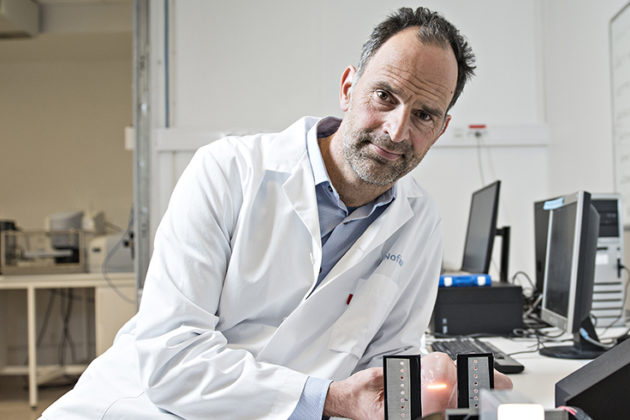Norwegian Technology May Solve Global Poultry Problem

Nofima scientists, in collaboration with Nortura, have developed a method for identifying chicken breasts affected with a muscle syndrome called Wooden Breast (WB).
The method utilises a technology called Near-Infrared Spectroscopy (NIRS), which measures the amount of light absorbed at different wavelengths in foodstuffs.
Up till now, WB has been diagnosed by manually assessing the toughness of the breast. This is very labour-intensive and inefficient. For this reason, various research teams across the globe have attempted to develop a faster detection method which could be used for sorting and grading in the process line. The method developed by Nofima and Nortura has been tested with good results.
Precise measurements provide accurate results
“The technology can be used directly in the process line. It measures several fillets per second and can very accurately detect fillets affected with WB. Additionally, it can also reveal the severity of the syndrome,” explains Jens Petter Wold, Senior Researcher at Nofima. Petter Wold is responsible for quantifying, modelling and interpreting the optical signals measured on the chicken breasts.
In order to identify affected fillets, two factors characteristic of WB were used as a starting point by the researchers:
1) There is less muscle protein in WB fillets, owing to muscle fibre being replaced by connective tissue, fat and water.
2) Water in the muscle tissue of WB fillets is more tenuously bound to the protein.
Both of these effects can be very accurately measured using NIRS. The method has been tested in process lines with very good results.
“We hope that the method will help to effectively determine which factors cause WB, so that changes in production will be able to reduce its occurrence. This will lead to improvements in animal health, quality and profitability in the industry. The method can also be utilised to facilitate WB fillet sorting in the food industry,” says Petter Wold.
TOMRA Sorting Solutions intends to supply optical instrumentation that can be used for this purpose.
Low WB occurrence in Norway – worldwide problem
“WB has become a major challenge in the global poultry industry, particularly over the last five years. The causes of WB are still not fully understood, but we know that genetics and production conditions both play a part,” says Petter Wold.
The prevalence of WB in Norway is relatively low, as production is not as intensive as in other countries. In some international markets the frequency is at 5-10 %, and results in significant losses in the industry. It is not harmful for people to eat breasts affected by WB, but the quality of the breasts is not as good.
A muscle disease
WB is a type of muscle disease called myopathy, in which the breast muscles of chickens become tough and appear pale and somewhat misshapen. The diminished visual quality and diminished functional properties of this meat mean that it is often discarded or used for less profitable products.
To resolve this problem, research is being conducted to identify the causes of WB. If the causes can be identified, it is highly likely that this phenomenon can be curtailed or even eradicated.
“Even though we know that genetics and production conditions both play a role, we do not currently have a full overview of the causes. An effective method to detect the syndrome is required in order to both identify affected chicken breasts and to find correlations between the occurrence of the syndrome and different production practices. The method we have developed seems very promising,” says Petter Wold.
About Near-Infrared Spectroscopy (NIRS)
NIRS is a technique in which light is transmitted through a food item to measure light absorption at different wavelengths. It is a quick method of measurement and is suitable for measuring various properties of food, such as fat, water, protein, carbohydrates and pigments. NIRS is the most widely used on- and at-line technique in the feed and food industry.
